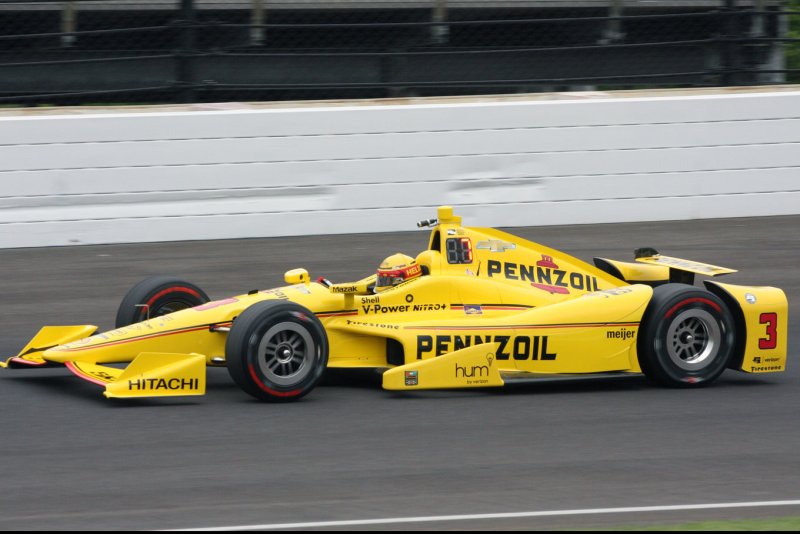Helio Castroneves, a 3-time Indy 500 winner, enters the north short chute during fast Friday practice for the 100th running of the Indianapolis 500 at the Indianapolis Motor Speedway on May 20, 2016 in Indianapolis, Indiana. Castroneves' speed was 230.333 MPH. Photo by Bill Coons/UPI |
License Photo
INDIANAPOLIS -- As Indianapolis Motor Speedway board chair Mari Hulman George famously says, "Lady and Gentlemen, Start Your (Qualifying) Engines!"
OK, so the qualifying part is not part of her normal delivery, but that's where the IndyCar Series stands heading into qualifying weekend.
There are only 33 car-and-driver combinations, so there will be no bumping from the field, but there still will be jockeying for position in the 100th Indianapolis 500, which will be run May 29. There's a pole winner to be determined, prize money and points to be distributed, and congestion at the green flag to avoid.
Qualifying might not matter like it did in 1995 when Roger Penske's two cars missed the show, but it's still helpful to be the best of the speed best.
For instance, the winner of the pole receives 42 points, which is nearly the equivalent of a regular IndyCar Series race. The slowest qualifier will draw just a single point, which could create a big swing in the standings even without the race itself, which carries a double-points incentive.
The pole winner also receives a $100,000 bonus, and while that doesn't have the same monetary impact it once had, no team is turning down the oversized check.
Friday was Fast Friday at the famed oval, which means it was the day IndyCar permitted its engine manufacturers -- Chevrolet and Honda -- to increase the power in their twin-turbocharged V-6 engines. Speeds climbed at least 4 mph across the board, and the boost of about 30 horsepower will be in effect during the next two days of qualifying.
On Monday, the boost will be returned to race-day level: 130 kPa.
Aside from the points and the prestige at stake, the storylines are straightforward:
--Has Honda caught Chevrolet?
Last year, it was a rout, with Chevrolet claiming seven of the top nine starting positions and the top four finishing positions in the race. The equipment rules are essentially the same as last year, but a Honda driver has paced each of the four practice days this week. A Honda last won the pole in 2011, when every car was powered by Honda.
--Who's Hot, Who's not?
The Andretti Autosport contingent has been on fire all week, with Marco Andretti, Ryan Hunter-Reay, Carlos Munoz and Townsend Bell consistently taking spots in the top three, with rookie Alexander Rossi showing the best among the newcomers. Team Penske should again be the favorite for qualifying -- it has won a record 16 poles -- but only Will Power has shown top-shelf strength (he not only led Friday's session, he has the fastest lap time when factoring out the draft). Scott Dixon won last year's pole, but he hasn't cracked the top five in any practice this week. Can he repeat as the No. 1 qualifier?
--What's the qualifying process?
With only 33 entrants, the format is relatively straightforward. On Saturday, each car gets as many attempts as time permits between 11 a.m. and 5:50 p.m. The fastest nine will advance to Sunday's special pole-deciding session (5 p.m.). The other 24 will participate in re-qualifying Sunday in order of slowest to fastest in a single-chance session starting at 2:45 p.m. The race's starting order will be determined by Sunday times. All qualifying attempts are the traditional four laps, and qualifying, like the race, will air on ABC.















